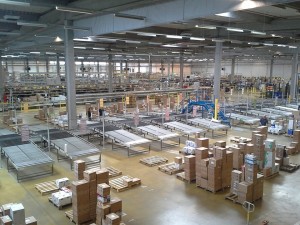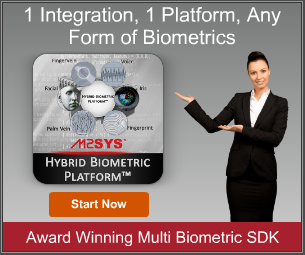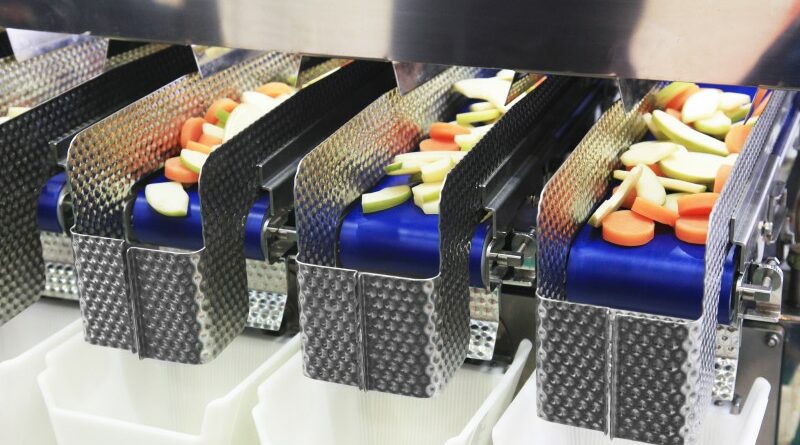Biometric Screening: The Future of Food Processing Technology?
This post comes from the writing team at Viking Food Solutions, Australia’s leading supplier of Butcher Shop and Meat Processing Machinery.
Foodborne Illness
We have had many unintentional foodborne illnesses transmitted to consumers this past year. For example, these have come through such companies as Chipolte’s, Wegmans, Dove candies, Trader Joe’s, and a host of others with less notoriety. Foodborne illness is a complex problem involving the producer, the land, equipment used to nurture, harves, and prepare food for transportation, processing and packaging, maintaining product integrity on its way to market, and actual consumer use of the product once received.
Food Engineering
In the final analysis, we are dealing with a microbial issue. Biometrics, a methodology that identifies life forms by their verifiable stable unique physical features, makes it possible to delineate a given food, its normal associated microbes, and any interlopers that contaminate that food. Specifics can be stored digitally and electronically, allowing comparison to any food baseline at any point in the pipeline of food from field to dinner table. Because data may be stored digitally, computerized monitoring equipment may assess food processing as it proceeds through delivery chain.
Biometric Technology
Biological foodborne illness may relate to a number of microorganisms, e.g., bacterial, viral, parasitic, etc. Bacteria are responsible for the majority of contaminations, each bacterium described in species-specific biometric terms.
Biometric Screening
We often think of biometric screening in terms of human genome evaluation. When we look at its application to detection of pathogens in our food, the technology has stepped far beyond the lab. Biometrics using immunomagnetic separation and polymerase chain reaction have allowed nanobiotechnology to develop “labs on a computer chip.” Our food industry may employ these chips in hand-held devices to determine pathogens growing within our food. Marshfield Food Safety, IEH, etc. offer onsite expertise and equipment for a variety of settings to employ this type of technology.
Food Processing Technology
Traditional evaluations for foodborne illness have involved cultures, assays, etc., all dependent on laboratory work that typically is remote from the food handling site. As lab chip technology has become available, we have moved toward real-time assessment, a step toward automation and swift evaluation of foodborne illness. Practical implementation of this chip technology still requires appropriate storage of specimens and data, calibration, timely application of analysis, sterile environment for the specimen and processor, and maintenance of the actual pathogen sensors.
on laboratory work that typically is remote from the food handling site. As lab chip technology has become available, we have moved toward real-time assessment, a step toward automation and swift evaluation of foodborne illness. Practical implementation of this chip technology still requires appropriate storage of specimens and data, calibration, timely application of analysis, sterile environment for the specimen and processor, and maintenance of the actual pathogen sensors.
Determining Baseline
Long term processing of food and verification of the food components, including presence of nonpathogenic components, is an obvious first step in development of biometric food processing equipment. Determining unusual blossoming of bacteria within the food or identification of unusual bacteria pathogens in that food depends on an established baseline. That is, pathology is dependent on deviation of monitoring results from a baseline.
Food Packaging Machine
“Miniature stick-packaging” has been developed to pre-store and release reagents innate to lab chip processing. The process has been adopted for industrial packaging. Over 270 North American and European companies employ a methodology employing microfluidics. The microfluidic-enabled microchip connects the processor component of the chip to the testing material via tubules which allow small samples to enter the chip’s processing chamber. Results are reported quickly. These chips are employed by food processors and the medical community.
Meat Processing Equipment
Canada has had recent special interest in Listeria evaluation of consumer-ready meat products. A microfluidic/biosensor device capable of producing useful results in Listeria detection has been proposed for processed meat and presumably for products at the processing point before entering the distribution and delivery of the meat product. Preliminary lab-on-chip evaluation is ongoing at the University of Alberta.
Potential Applications for Biometrics Using Lab-on-Chip Technology
 We are very close to having technology which will verify that a product is what it is represented to be, because this technology can determine from what animal a meat product has come or from what plant a processed item was derived. In terms of bacterial pathogens, lab-on-chip technology can potentially be applied in the field or field animal before the plant or animal enters the harvesting and processing phase. It can be applied after initial washing of plant and animal before shipping. When the plant or animal is received and prior to processing, the technology may be applied. After processing and before packaging, the lab-on-chip can be used again. During the quality control phase, random sampling of product can verify the product’s integrity. When foodborne illness is suspected, suspect food can be analyzed. Such a testing strategy would stop process of food delivery to the consumer virtually at the point of contamination.
We are very close to having technology which will verify that a product is what it is represented to be, because this technology can determine from what animal a meat product has come or from what plant a processed item was derived. In terms of bacterial pathogens, lab-on-chip technology can potentially be applied in the field or field animal before the plant or animal enters the harvesting and processing phase. It can be applied after initial washing of plant and animal before shipping. When the plant or animal is received and prior to processing, the technology may be applied. After processing and before packaging, the lab-on-chip can be used again. During the quality control phase, random sampling of product can verify the product’s integrity. When foodborne illness is suspected, suspect food can be analyzed. Such a testing strategy would stop process of food delivery to the consumer virtually at the point of contamination.












